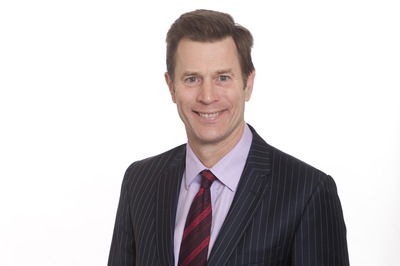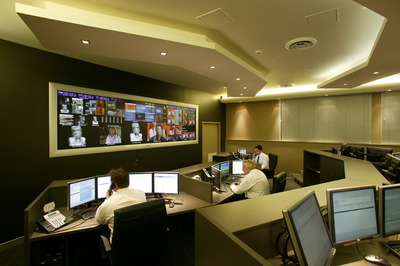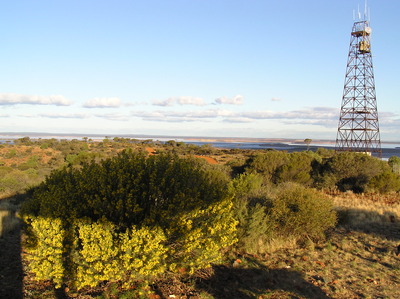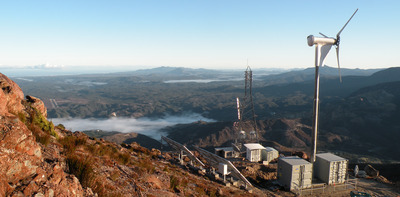Interview: Brett Savill, BAI
Thursday, 12 December, 2013
From its origins as an obscure government entity, Australia’s BAI has transformed into a market-leading commercial operation providing services to almost the entire broadcast industry.
Up until the late 1990s, there existed a government body called the National Transmission Agency. This body had arisen from a federal government realisation that it would not be economically viable for private broadcasters to roll out multiple radio and TV transmission networks into the bush. So the government chose to do it itself, often using its Commonwealth status to grant right of entry to areas, such as national parks, that would otherwise have been hard to access.
The significant capital expenditure that would be required to roll out digital television led to the decision to privatise the business in 1999 on the understanding that the new company - Broadcast Australia, now the BAI Group - would lead the rollout. The government raised money from the sale and converted a variable and lumpy capex program into predictable annual fees.
More recently, BAI became part of a listed entity, Macquarie Communications Infrastructure Group, which was taken private in 2009. Today it is owned by the Canadian Pension Plan Investment Board (CPPIB) and some smaller Canadian pension funds. CPPIB has a focus on Australia and has also invested in Barangaroo and some local toll roads.
We spoke with Brett Savill, strategy and corporate development director for the BAI Group, to find out where the transmission tower business is heading.

What is the present scale and distribution of BAI’s infrastructure?
BAI operates from around 600 sites covering 97% of the Australian population. The majority are in regional and remote Australia because of the broadcast nature of the signal. The bulk are large lattice towers (30 to 180 m) rather than the monopoles that are often used by the telco industry. Many have large huts (in the 1980s many of the field force used to live on the sites) with spare capacity as well as backup power.
Generally speaking, the sites are on the top of hills because of the propagation characteristics of TV and radio. The exceptions to this are the AM radio sites, which are close to the edge of towns. A network operations centre (NOC) runs the network and we have large teams of engineers - specialists in RF, power and structures.
We use a mix of technologies to get signals to the towers. Some sites use fibre; remote sites use microwave links; and the most remote sites of all use satellite.

What types of customers do you have?
Our customers run the breadth of the media, telecommunications and emergency services industries.
ABC and SBS represent about two-thirds of our turnover and receive a managed service; that is, BAI invests the capex and runs the service on behalf of the national broadcasters against a service level agreement. All telcos use our towers, plus many government agencies use them for their radio networks, eg, rural fire services.
We have rolled out digital TV and a series of other contracts for the ABC and SBS, including News Radio, Digital Radio etc.
Over time the business has expanded and we have acquired RFE (a radiocommunications engineering business in Hong Kong), Hostworks (a critical application manager in Australia) and Transit Wireless (which operates a DAS system in the New York subway), and we have set up Airwave Solutions Australia to focus on the public safety space here, and BAI Canada which is developing a DAS system for the Toronto subway.
We like to think that all our networks are resilient, shared, safe and smart. Our tag line is that we are the ‘Platform to Communicate’ - we enable a digital world connecting our customers to their audiences and users across multiple platforms.
As well as providing access to your towers for customer equipment, do you also sell bandwidth on your microwave and other links?
Yes. Some customers want to own the equipment themselves, and in those cases we just do what you call ‘vertical real estate’. Others want a managed service, in which case we’ll put in the capex and run it for a semi-annual fee. Telcos and commercial broadcasters tend to rent space on sites but run the active part of the service themselves.

Are there any trends - growth or decline - in any particular customer sectors?
Analog TV has recently been switched off, which will represent a drop in our turnover. However, we are managing the restack process on behalf of the government, broadcasters and the telco industry, which is a very large and high-profile project. In terms of new areas, we expect digital radio to be rolled out in the regional areas beyond the current metro focus. We see continued growth in the telcos - Optus and Vodafone Hutchison Australia (VHA) as they roll out deeper into regional areas, and Telstra as it upgrades its sites for 4G in the 700 MHz space. There is also growth in other radcomms customers; for example, fixed wireless providers like NBN Co.
What effect is the trend away from analog to digital having on your business?
It’s interesting you should mention that. The new digital equipment produces a vast amount more telemetry information than it sends back to our NOC. So at the moment we are going through a big change, to work out how we can best use all of this information to make better decisions.
There must be huge demand from rural Australia for better communications access - what role is BAI playing in fulfilling that need? What are the opportunities and challenges?
We started up Airwave four years ago to focus on private networks, initially the emergency services, but also the utility and the mining sectors. All have a need for high-availability, low-priced connectivity from a service-based company. We have also revamped the team dealing with the telco customers to raise the quality of our service to best practice levels: this means faster turnaround, proactive advice on dealing with location issues and flexible and competitive pricing.

Earlier this year, BAI acquired a group of transmission sites from the Mine Site company. What prompted that?
Mine Site had acquired a business called Nixon Communications that had a portfolio of sites that were non-core. We acquired Mine Site because they were in great locations with strong demand, such as the edge of Mackay in Queensland. We felt we could invest in those sites to bring them up to the highest standards expected of our sites.
With that acquisition, is it simply a case of taking on a management role for current customers, or is there a goal of building more business using those assets?
Our biggest customer today on those sites is actually Mine Site itself, which was a new customer to BAI. However, the others were all existing customers.
With the Mine Site assets, will you be able to pick up any business from the eventual wider rollout of the new Queensland GWN?
Telstra has been awarded this contract and we are keen to work with them if our sites are in the right locations. Airwave also has a contract to roll out a network for Ergon and the sites may be useful for them as well.
What can you tell us about the federal government’s ‘black spots’ program and where might BAI fit into it?
We are keen to talk to industry and government about where we might be of assistance. We do believe that the way the program has been managed in the UK provides some useful pointers to a successful program here in Australia. Our sister company Arqiva was recently awarded GBP150 million by the UK government to build 575 new sites in black spot areas on behalf of mobile operators.
Do you see more opportunities or need for infrastructure growth for BAI? If so, where and when?
Australia is unusual for a first-world country because there is such a lot of new macrosite communications infrastructure being planned and built: there is the NBN fixed wireless rollout, as well as the new sites planned by Optus and VHA. There will also be new investments in private networks such as Ergon. Finally on the microsite front, we will see the rollout of distributed antenna systems (DAS) like our New York business, Transit Wireless. There has been some movement in Australia on this front, but nothing like the level seen in the US and Europe.
Finally, there’s a concept called ‘neutral hosting’. Does BAI have a stake in that?
You’ve looked at the New York business (interview with Chris Jaeger of Transit Wireless in the Sep/Oct 2013 issue), which involves a DAS, a distributed antenna system. The telcos plug their equipment into a base station hotel, and rather than just renting space on a tower, the neutral host has the responsibility of radiating the signal from the base station hotel to multiple smaller locations, microsites or whatever.
Everyone recognises across the world that small cells are where the growth is. In the US, I think there are something like five times as many small cells as there are macrocells. I think we’ll see the same thing here in Australia - not in the next couple of years, but certainly in the next five years.
RFUANZ report: setting the frequency for success in 2025
Last year brought a lot of internal change for RFUANZ, but the association has hit the ground...
ARCIA update: an extended event calendar for 2025
With the addition of Tasmanian events and a conference in Adelaide in September, 2025 will see...
ARCIA update: plans for 2025
ARCIA will be holding a mixture of workshop, conference and networking events in 2025, in the...





